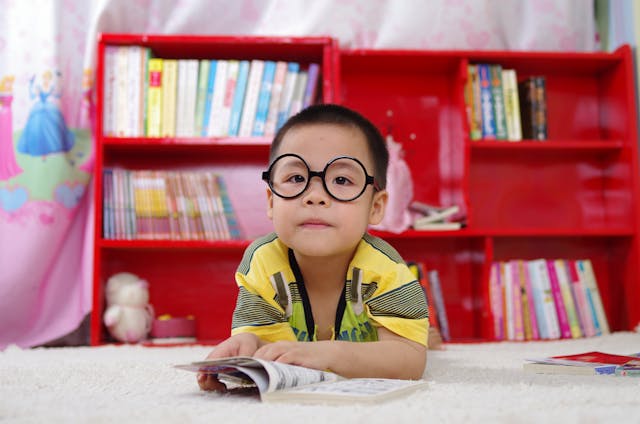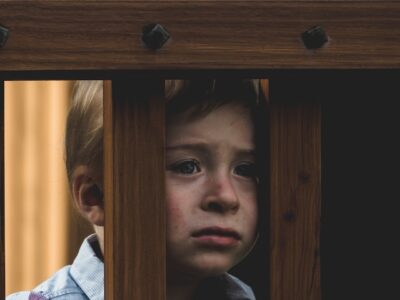Despite wanting the best for your child, sometimes it can be challenging to determine whether your child needs glasses, especially if they haven’t yet learned to express vision-related concerns. Because changes in eye health and visual acuity don’t typically present with external signs, assessing your child’s ability to see is heavily dependent on other signs and assessments from eye doctors during eye exams and checkups.
Now more than ever, with technology becoming a part of everyday life for children of all ages, it helps to recognize the signs that your Child Needs Glasses. To confirm your suspicions and to get custom prescription glasses, book a thorough kids eye exam with a trusted eye doctor in Woodbridge.
Squinting and eye-rubbing
One of the most common signs that your Child Needs Glasses is frequent squinting or rubbing of the eyes. Squinting can indicate that your child is trying to compensate for blurred vision, while eye rubbing may be a sign of eye strain or fatigue. Pay attention to whether your child squints or rubs their eyes, especially when reading, watching TV, or focusing on distant objects.
Complaints of Headaches or Eye Fatigue
Children with uncorrected vision problems may experience headaches, particularly after reading or engaging in close-up activities. Eye fatigue or discomfort, such as itching or burning sensations, can also indicate underlying vision issues. If your child frequently complains of headaches or eye strain, it’s essential to consider scheduling an eye exam to assess their vision and determine if glasses are needed.
Holding Objects Close to the Face
Children who hold books, tablets, or other objects unusually close to their faces may be struggling with nearsightedness (myopia) or other refractive errors. This behavior can help them compensate for blurred vision and focus more effectively on close-up tasks.
If you notice your child constantly holding objects close to their face or sitting very close to the TV, it’s worth investigating further with a comprehensive eye exam.
Difficulty Seeing Objects at a Distance
If your child has trouble seeing distant objects clearly, it could be a sign of nearsightedness or astigmatism. Nearsightedness makes it challenging to see objects in the distance clearly, while astigmatism can cause blurry vision at any distance.
Pay attention to whether your child struggles to recognize people or objects from a distance or frequently squints when looking at faraway objects, as these could be indicators of vision problems that require correction with glasses.
Poor Performance in School
Vision problems can impact a child’s academic performance and overall learning experience. If your child is having difficulty reading, writing, or participating in classroom activities, it’s essential to consider whether their vision could be a contributing factor. Children with uncorrected vision issues may struggle to see the whiteboard, read printed materials, or maintain focus during lessons, leading to frustration and academic challenges.
If you notice a decline in your child’s academic performance or reluctance to engage in school-related tasks. You can also talk to your child’s teachers to understand whether they have noticed other signs that indicate a need for corrective lenses. Scheduling an eye exam is a crucial step in identifying and addressing potential vision problems.
Eye Alignment Issues
Misaligned eyes or a tendency to squint one eye more than the other can indicate strabismus, a condition that affects eye alignment and can impact vision development. Children with strabismus may experience double vision or depth perception problems, affecting their ability to navigate their environment effectively.
If you observe any signs of eye misalignment or notice that your child frequently covers or closes one eye, it’s essential to consult an eye care professional for a comprehensive evaluation.
Family History of Vision Problems
A family history of vision problems, such as nearsightedness, farsightedness, or astigmatism, can increase the likelihood that your child will develop similar issues. If you or your partner wear glasses or have a history of vision problems, your Child Needs Glasses as well. Regular kid’s eye exams can help detect vision issues early and ensure timely intervention if glasses are necessary.
How to Preserve Eye Health for Kids?
You can help protect your child’s vision with these steps:
Encourage Outdoor Activities:
Outdoor playtime not only promotes physical fitness but also benefits eye health. Natural sunlight provides essential nutrients like vitamin D, which supports eye health and reduces the risk of nearsightedness.
Encourage your child to engage in outdoor activities such as sports, nature walks, and playground games. Limit screen time and encourage breaks to reduce digital eye strain and promote healthy visual habits.
Ensure Proper Lighting:
Good lighting is essential for comfortable and efficient reading, writing, and other visual tasks. Ensure that your child’s study area is well-lit with ample natural or artificial light. Position desks and workspaces to minimize glare from windows or overhead lights. Consider using task lighting or adjustable desk lamps to provide focused illumination for reading and homework.
Promote Healthy Nutrition:
A balanced diet rich in nutrients is essential for overall health, including eye health. Encourage your child to consume a variety of fruits, vegetables, and whole grains, which provide essential vitamins and antioxidants that support eye health.
Foods rich in vitamin A, such as carrots, sweet potatoes, and spinach, are particularly beneficial for maintaining healthy vision. Limit sugary snacks and processed foods, which can contribute to obesity and related eye conditions.
Practice Proper Eye Safety:
Protective eyewear is crucial for preventing eye injuries during sports, recreational activities, and household chores. Ensure that your child wears appropriate safety goggles or glasses when participating in activities that pose a risk of eye injury, such as woodworking, gardening, or sports like basketball or soccer. Teach your child to avoid touching or rubbing their eyes, especially when handling chemicals, dust, or foreign objects.
Monitor Screen Time:
Excessive screen time can strain the eyes and contribute to digital eye fatigue, dryness, and discomfort. Establish screen time limits for your child and encourage regular breaks to rest their eyes and reduce visual fatigue.
Encourage proper ergonomics by ensuring that screens are positioned at eye level and maintaining a comfortable viewing distance. Consider using blue light filters or screen protectors to reduce exposure to potentially harmful blue light emitted by digital devices.
Regular Eye Exams for Healthier Vision
Regular eye exams are key to proactive eye care. Schedule comprehensive eye exams for your child, starting from infancy and continuing throughout their school years. Early detection of vision problems allows for timely intervention and treatment. An optometrist can assess your child’s vision, eye alignment, and overall eye health, providing valuable insights into their visual development.










